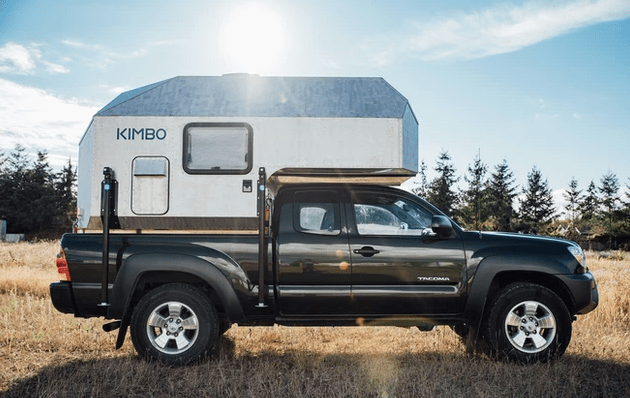205 vs 225 Tire: 8 Parameters Based Ultimate Comparison
If you want to know who the winner of the battle 205 vs 225 tire is, look no further, you’ve come to the right place! Keep reading to know the positives and negatives of each tire, their highlights, specification, and some of the guiding factors to help you choose.
Let’s dive into it right now!
Table of Contents
225 vs 205 Tires: Benefits and Disadvantages
When dealing with these uneven sizes, each has pros and cons. The numbers 205 and 225 indicate the tire width. Before selecting a tire, you must consider certain factors like fuel consumption, rim width, level of handling, the number of inches for clearance, and load capacity.
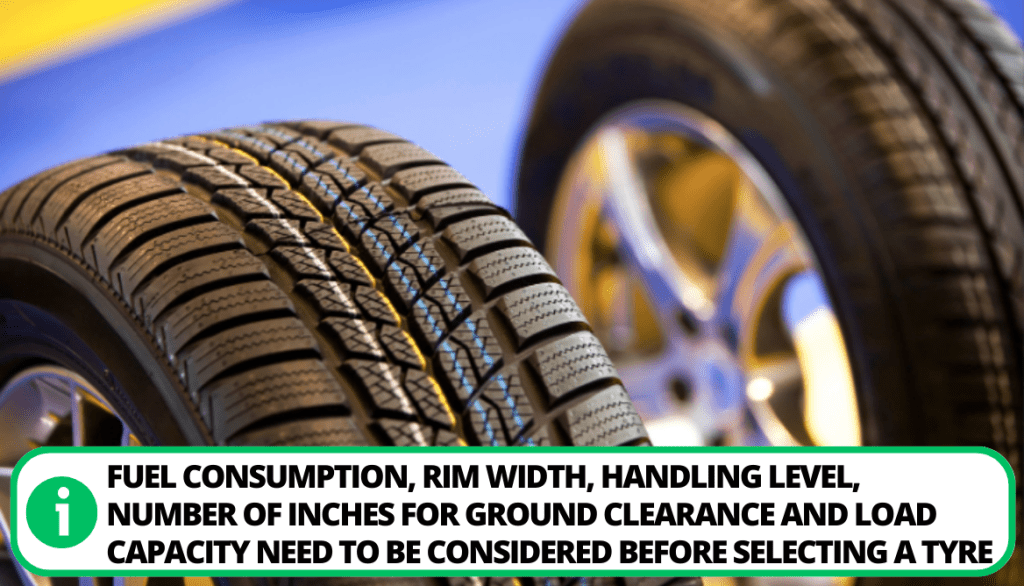
What Are 225 Tires?
225 tires refer to a width of 225 millimeters. Measurements are taken from the sidewalls when the tire is placed on a specific rim width. Ideally, you should mount these tires on a rim width of 6 to 8 inches.
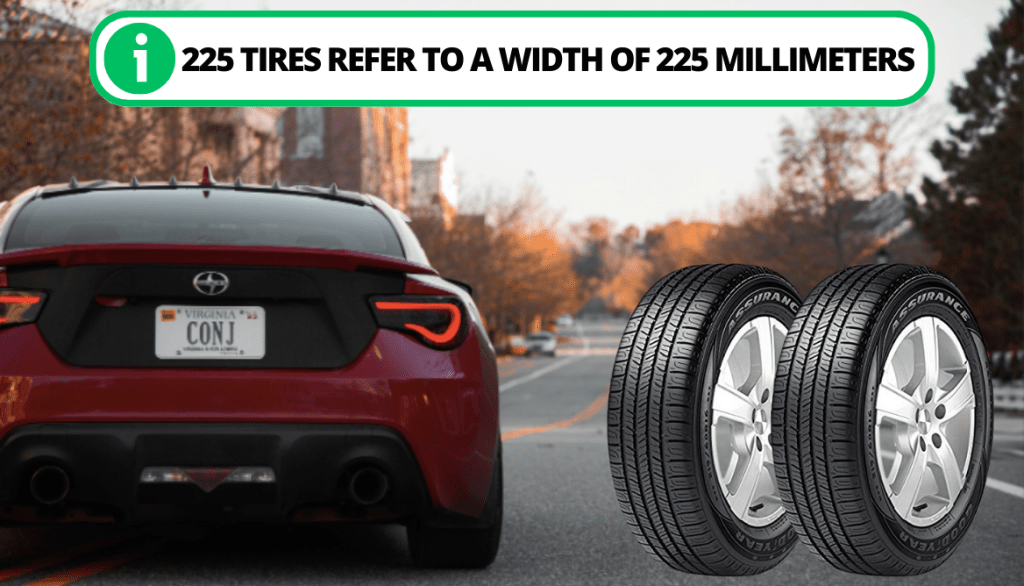
These tires have numerous benefits. Here are some of them:
- High snow and winter performance: They have better handling when touring snow-covered terrains due to their high traction and tread depth.
- Reduced noise: While wider tires are infamous for their noisy nature due to the road surface contact, most tire manufacturers implement designs that ensure reduced noise.
- Better handling: Wider tires engage more with the road surface, improving the handling ability.
- Enhanced Appearance: A 225 tire is wider than narrower options, and some people prefer the vibrant appeal of wider tires. They can give the vehicle a more aggressive and sporty look, enhancing its visual appeal.
- Increased clearance: These tires have an allowance for more inches between them and other vital vehicle components like the suspension to ensure your vehicle functions optimally.
- Improved Braking Performance: Bigger tires generally provide enhanced traction. This feature aids in improving the grip, which improves braking efficiency. Additionally, the added inches from the rim size of a 225 tire increase the tire’s contact patch with the road surface.
- Enhanced Off-Road handling capability: If you are regularly touring dry surfaces, employing the 225 tires will have you set. It improves stability and traction.
While there are pros to using a 225 tire, you should also evaluate some cons. They include:
- Increased fuel consumption: With a bigger tire, there is more contact with the road; thus, more energy is required. This element makes them utilize more power, thus not so fuel economy.
- Increased noise: The 225 tire is noisier than the 205 tire to a certain degree. This characteristic is because of the larger contact patch with the road. It may slip past you at first, but you will hear it after regular driving.
- They are more expensive: Depending on various factors, such as the tire brand and availability of the tire you seek, pricing may vary. However, narrower tires are more economically friendly than wider tires.
- Limited Availability: Depending on your specifications, accessing a wider tire and rim may be problematic in certain areas. Most vehicles are built to function using narrower tires, thus making it harder to locate larger tires.
What are 205 Tires?
It is a narrower tire when compared to the 225 tires with a width of 205 millimeters. It is advisable to mount it on a 5.5 to 7.5 inches wide rim. Tire is widely used due to the standard of vehicles and also has its advantages and shortcomings.
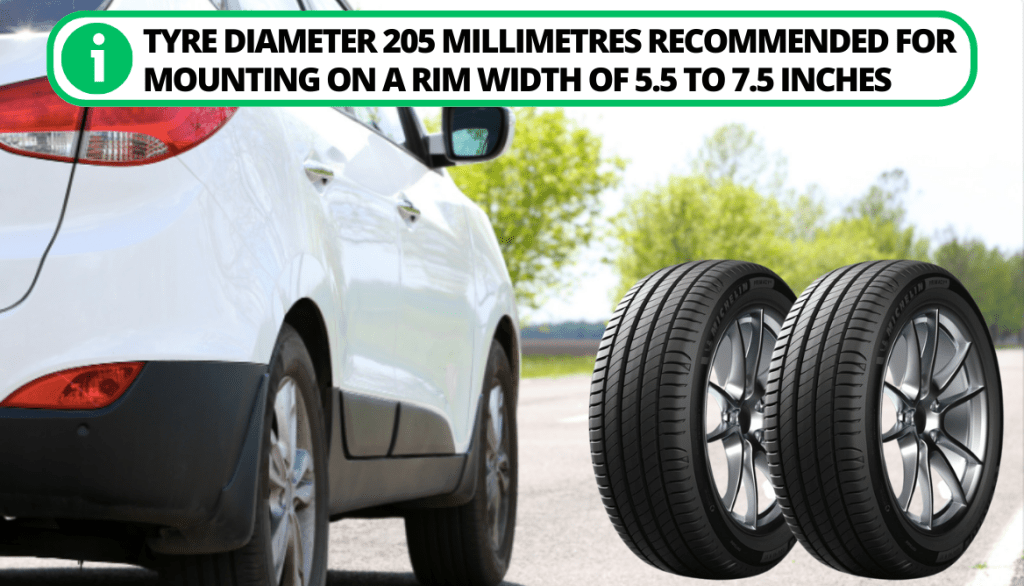
Here are some of the advantages of using 205 tires:
- Lower cost: 205 tires are cheaper than 225 tires, basically due to their narrowness. They are a good option if you are on a tight budget.
- They are fuel efficient: According to various analytics partners, narrow tires provide better fuel economy due to the minimized rolling resistance. That means the tire experiences less friction with the road surface, requiring less energy and thus reduced fuel consumption.
- Aesthetic look: Narrow tires have a classy sporty that will complement your car if you decide to personalize content, such as putting custom rims. If you intend on giving your vehicle an aesthetic look, then the 225 tire is for you. Big brand names take advantage of this to have an edge.
- They are an all-season touring tire: The 205 tires are built to endure all terrain and are complemented with strong rims. Most tire manufacturers design these tires to withstand rough conditions, ensuring that most vehicles can handle multiple terrains.
- Adequate traction: Though not as firm as 225 tires, they contain decent traction, ensuring a good grip on the road. That also ensures your car has enough inches for clearance with the suspension setup, wheel size, and other components.
Let’s go over some of the cons of using 205 tires:
- Reduced handling: Using narrower tires deprives you of the necessary inches to facilitate road contact. This factor results in ineffective cornering and reduces general vehicle handling. It is advisable to maintain normal speeds when using these tires.
- Performance reduction on wet surfaces: 205 tires have reduced griping due to their size. Their rims are narrower than wider tires, making them perform poorly on wet surfaces.
- Crippled accelerating and braking capacity: The narrow ones have reduced width, thus less grip with the road, meaning that braking at high speeds may be challenging. Additionally, accelerating quickly is hindered; hence they aren’t popular with specialized cars like sports cars.
Difference Between 205 and 225 Tires
Product | 205 tires | 225 tires |
Tire Sizes: | 205 millimeters | 225 millimeters |
Tire Width: | Narrower in terms of inches | Wider in terms of inches |
Vehicle Load: | Can carry up to 615kg | Can carry up to 900kg |
Fuel Consumption: | Better fuel economy | Consume more fuel |
Noise Level: | Less noisy | Are noisier |
Traction: | Reduced traction due to size | Increased traction due to tire size |
Stabilization: | Not so stable due to contact patch | Very stable due to a larger contact patch |
Price: | More economical | Less economical |
Tire Sizes
The most outstanding difference between 205 and 225 tires is the size. The difference in width determines what type of tires you buy. Any slight inconvenience in the number of inches could cause you a problem.
- 225 tires are a good choice if you want bigger car tires.
- The 205 tires should be your go-to for narrower tires and wheels.
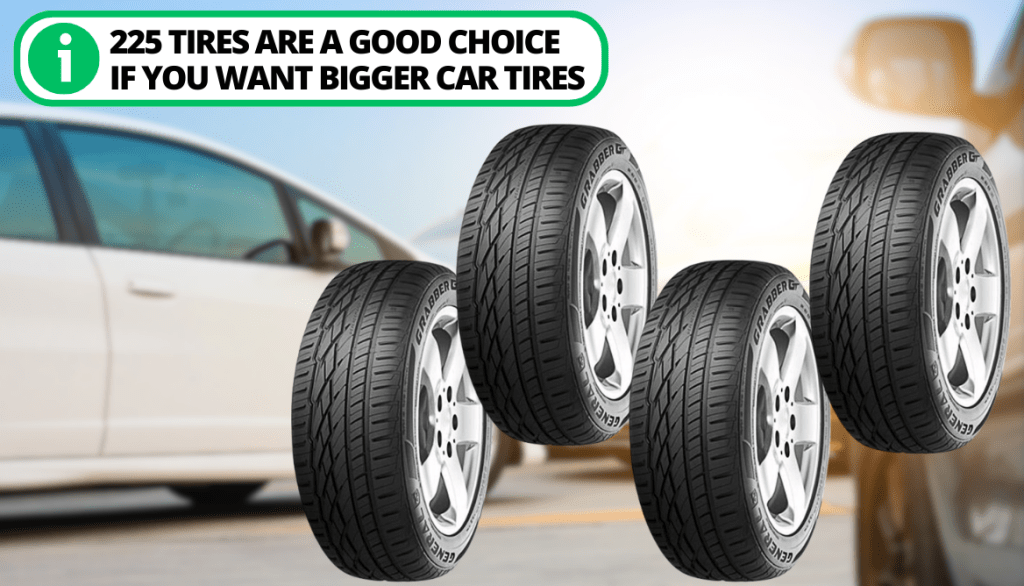
Tire Width
The widest point of a tire’s tread, measured in millimeters, is known as the section width.
- Taking measurements from one sidewall to the other represents the tire’s width.
- Sidewall height is a crucial indicator when assessing the performance of a wheel.
- The 225 tires are wider, ensuring a firmer ride than the 205 narrow tires due to the reduced inches.
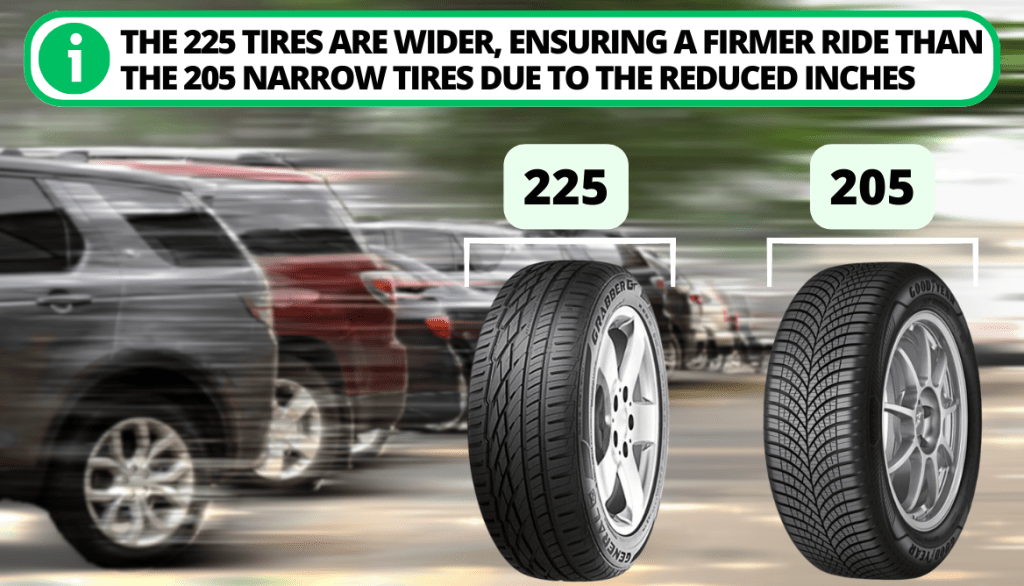
Load Handled
Vehicle load is a key aspect when choosing tire sizes.
- If you deal in heavy merchandise, for instance, containers, you need wheels that can handle higher capacities, such as trailer tires. The 225 tires make a good fit.
- Moreover, adding strong rims complements the general load handled.
- The 205, however, has a reduced load rating handling weights of up to 615kg.
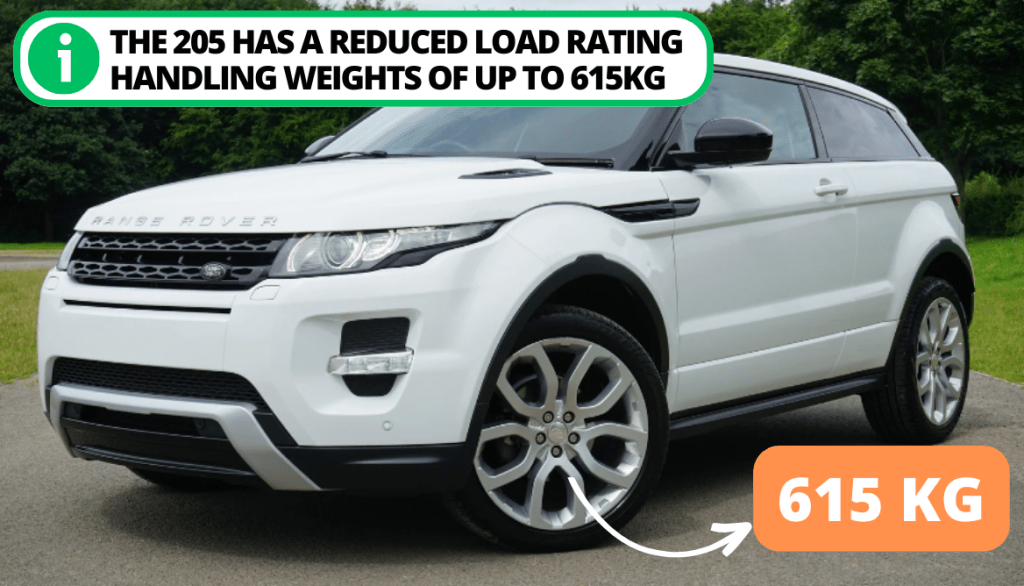
Fuel Consumption
Your vehicle consumes fuel depending on elements such as wheel size, rolling resistance, and traction.
- A larger-size tire encounters increased frictional resistance, which in turn increases the fuel intake.
- Smaller tires, however, consume less fuel.
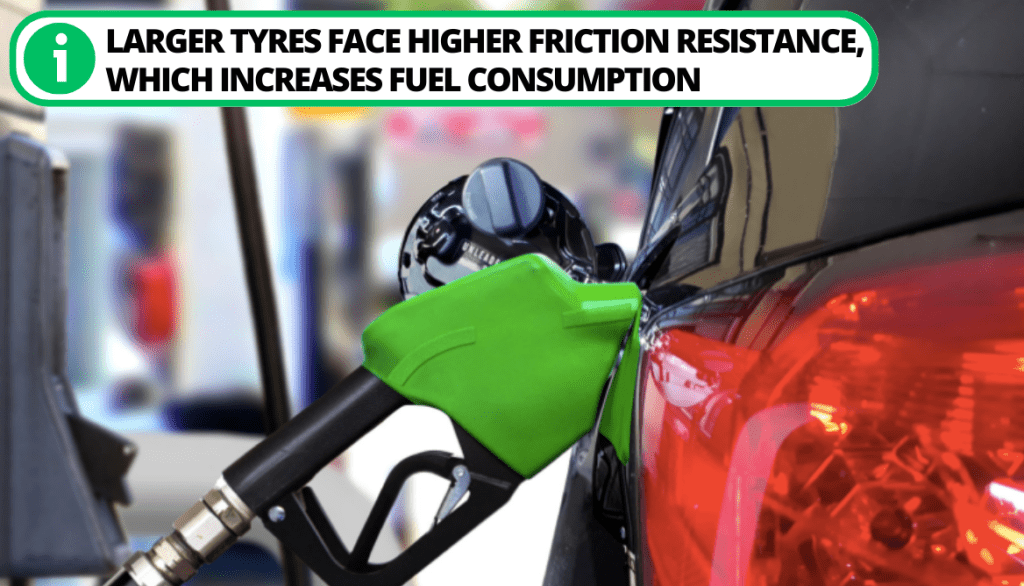
Noise Produced
All tires, regardless of the size, produce a lot of noise. 205 and 225 tires have a decibel of 70. That means they produce a similar amount of noise.
Traction
The 225 tire has more width qualifying it as a perfect tire to tour all surfaces vs. 205 tires. Note that wider tires have better traction on wet or dry surfaces but may not give outstanding results.

Furthermore, the tire has a deep tread pattern ensuring your vehicle grips the road properly. The 205 tires, however, don’t have as much traction.
Stability
The 225 offers better vehicle stability because of the humongous tire size, which results in an increase in width, thus, more grip. These tires also have a wider sidewall width facilitating more road contact. The 205 tires are narrower, providing significantly little stability on the road.
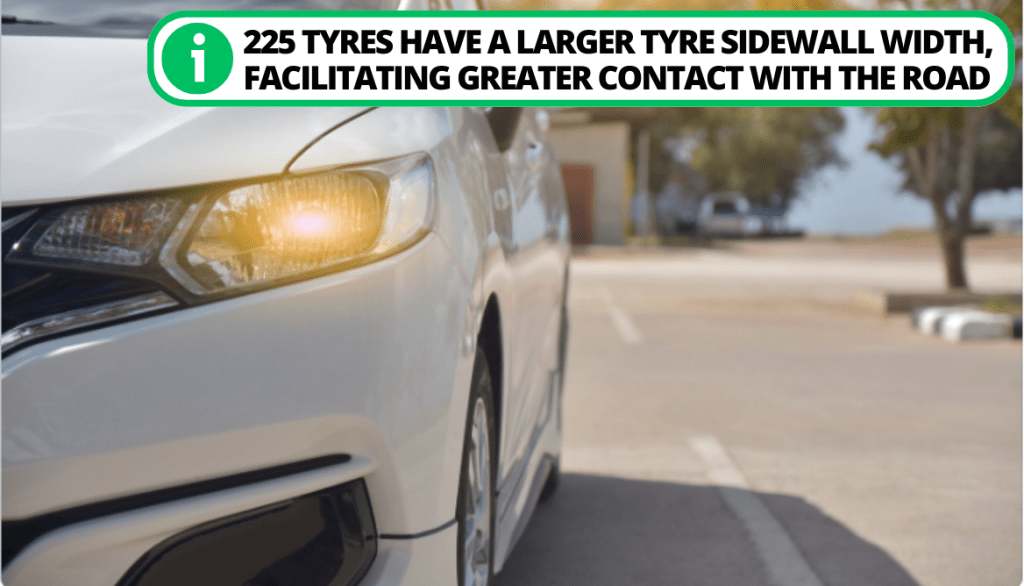
Pricing
Purchasing a set of 205 new tires is less costly. Big brands like Dunlop and Bridgestone sell these wheels at quite cheaper prices than 225 tires. The price difference arises from qualities like wheel diameter, tire size, sidewall height, and rim width.
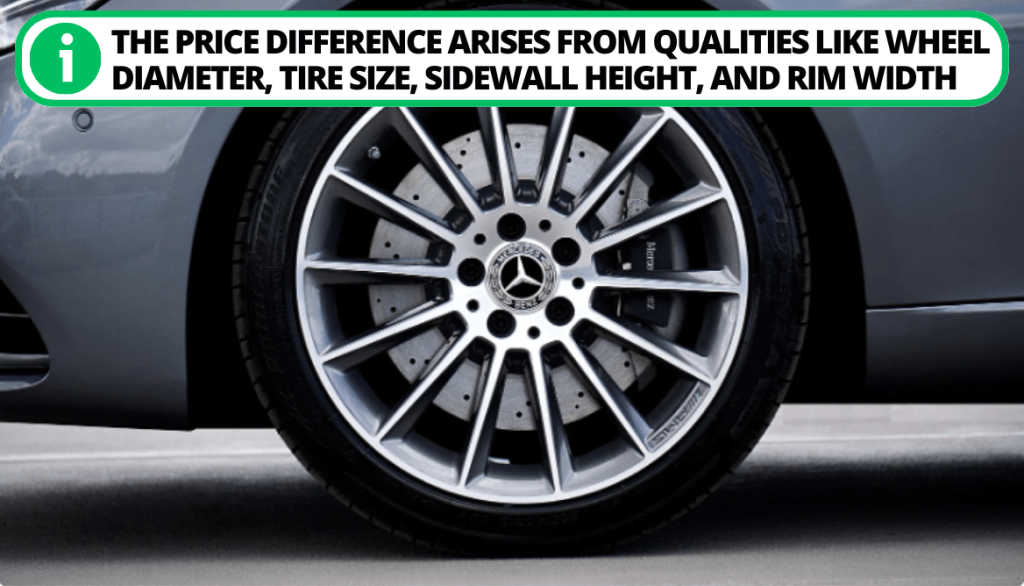
The 205 vs 225 Tire: Which One To Choose
After sifting through these features, we note that the two tires have pros and cons. Factoring elements such as cost, aspect ratio, load capacity, and tire size, among other elements, we recommend using 225 tires. Here’s why:
- 225 tires are larger, thus providing more road contact and ensuring you are more stable when driving at high speeds. Strong rims also complement them to support the tires.
- They have a better tread design that improves your car’s grip when driving.
- They have a wider tire width offering you a firm driving experience.
- In terms of load capacity handling, 225 tires can manage a heavier weight load than 205 tires. The existing difference is significant as well.
- Factoring in noise levels emanated, they are in a similar category as 205 tires; hence it is still better to go with them.
- They create room for more inches facilitating enough clearance to facilitate seamless operational flow.
- 225 tires have more adequate traction vs. 205 tires, thereby facilitating room for touring any terrain.
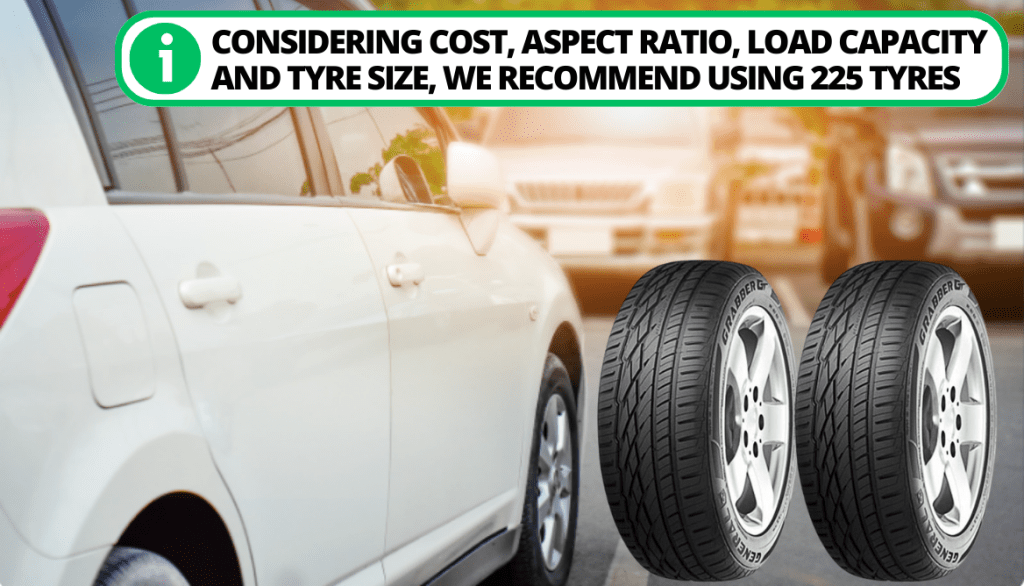
FAQ
Can I Use a 205 Tire Instead of a 225?
Yes, you can use a 205 tire instead of 225 tires. That will, however, be determined by your rim widths, tire height, section width, and planned budget.
What Is the Difference Between 225 and 205 Tires?
The main difference between 205 and 225 is tire sizes. 225 tires are characterized by a larger width and are larger than 205 tires. Other differentiating factors exist, such as the sidewall height, outside diameter, and aspect ratio.
Can I Replace 215 Tyres with 205?
Yes, you can replace your 215 tires with 205 tires. It is, however, important to confirm if your rim width is compatible. Also, consult a tire retailer or review your owner’s manual before replacing it.
Is 225 a Good Tire Size?
Yes, depending on your type of car, 225 is a good tire size. Generally, 225 tires facilitate enough clearance to ensure your vehicle operates optimally.
Is 225 a Low Profile Tire?
That will depend on the aspect ratio it is paired with. Anything under 55 is considered a low-profile tire due to the low aspect ratio. However, no, 225 tires are not a low profile when paired with a nice ratio.
Conclusion
Settling between 205 and 225 tires can be a challenging task. However, based on individual needs and specifications, selecting becomes easier.
Ideally, the 225 tire is a better option than the 205 tire. These tires have numerous advantages, like a larger contact patch due to the added inches, increased inches to provide an allowance, compatibility with stronger rims, and load capacity difference.
So what tires will you choose between 225 and 205 tires? Please let us know in the comments below.

I`m a current Law Enforcement Officer working within the Counterterrorism Bureau in New York State. I have been Camping for over 20 years. My styles of camping include tent, car, truck, van, and RV travel trailer. I have a YouTube channel where I teach all types of camping with an entertaining method: https://youtube.com/@TheSmallsRVAdventures

